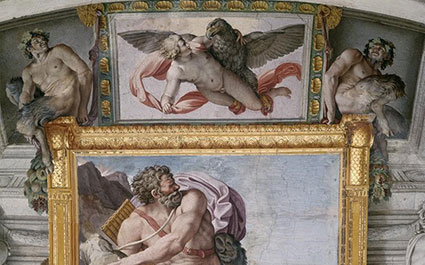HAU33008 and HAU33016 Painting in Europe in the Long Renaissance

This module is an exploration of Italian art – painting and sculpture - from c.1300 to c.1700 in the major centres of Florence, Rome, Venice, Naples, and Milan. The era is distinguished by a revived interest in Italy’s classical past and the emergence of humanist philosophies, and the impact of both on art over a long timeline will be investigated. The evolution of religious subject matter will be analysed via a number of different typologies – the fresco cycle, the altarpiece, the sculpted figure. The emergence and development of secular themes, including representations of classical mythology, will also be considered. The module will examine evolving stylistic debates around the values of naturalism and classicism over time, and the ways in which artists reflected on the very concept of the “Renaissance” in different artistic centres. The role of patronage, both civic and private, and the rising status of the artist will feature prominently, and particular attention will be paid to artistic processes and means of production.
- Module Organiser:
- Dr Peter Cherry
- Duration:
- Semester 2
- Contact Hours:
- HAU33008: 2 lectures per week, 1 seminar per fortnight
HAU33016: 1 lecture per week, 1 seminar per fortnight
- HAU33008: 2 lectures per week, 1 seminar per fortnight
- Weighting:
- HAU33008: 10 ECTS
HAU33016: 5 ECTS
- HAU33008: 10 ECTS
- Assessment:
- HAU33008: Essay, project and visual analysis exercise
HAU30016: Essay and visual analysis
- HAU33008: Essay, project and visual analysis exercise
- Course open to:
[M=mandatory; O= optional]- Single Honors (O), Joint Honors (O), Art History as a minor (O), visiting (O);
Learning Outcomes:
Upon the successful completion of this module students should be able to:
- identify the major works of a selected number of painters and sculptors active in Italy during the period c.1300-c.1700.
- analyze key trends in style, artistic practice and patronage at different historical points, and in different artistic centres over the period.
- explain the function and meaning of a range of types of visual art and imagery in different cultural contexts over the period.
- engage critically with texts, methodologies and scholarly debates which have shaped art-historical interpretations of the period.
- interpret visual and written evidence to formulate informed, contextual analyses of visual art of the period.
- defend an argument in response to a specific question in written and oral presentations, using concrete examples of works of art.

